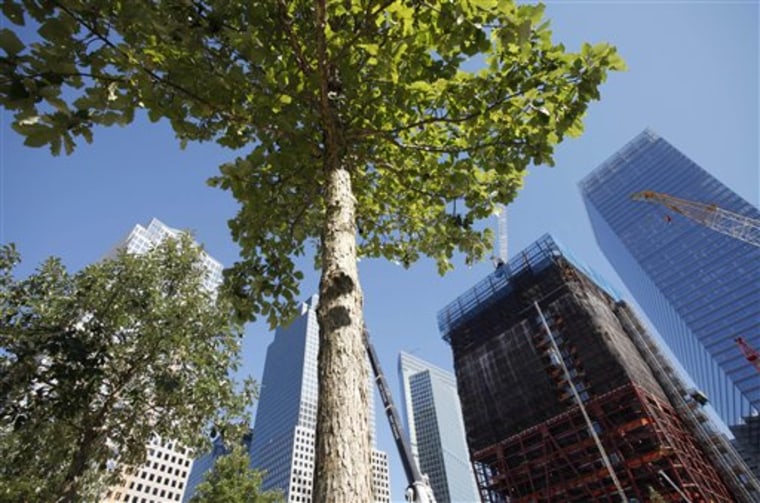After nearly nine years, life is returning to ground zero in a tangible way.
Crews Saturday began planting 16 swamp white oaks at the World Trade Center site. They are the first of nearly 400 trees to be planted around the eight-acre memorial to the nearly 2,800 people were killed when terrorists attacked the twin towers on Sept. 11, 2001.
The trees will dot a cobblestone plaza surrounding two huge pools built on the footprints of the destroyed towers.
Joe Daniels, president of the 9/11 Memorial Foundation, was on hand at the site to help with the planting. He said designers of the memorial envisioned a lush and quiet green space that would bring solace to visitors.
"When people come up to the pools and see the names and be under this canopy, this forest, it will be a very peaceful environment," Daniels said.
Cultivated for four years at a nursery in Millstone, N.J., the 16 trees were loaded onto eight tractor-trailers at midnight Friday for the 35-mile trip to Manhattan. Several were planted overnight and into Saturday morning on the western side of the memorial plaza.
The memorial plaza will essentially become a rooftop garden, built atop the deep chasm left by the destroyed towers. It will cover the museum commemorating the 2001 attacks, commuter train platforms and a parking garage that are being built as far as 70 feet below ground.
The trees were irrigated and fertilized for four years at 15-acre nursery in New Jersey. Daniels said the swamp white oaks were selected for their beauty and their ability to withstand Manhattan's cold, snowy winters and steamy summers.
The trees come from New York, Pennsylvania and Washington, D.C. — the places where the attacks hit. They were about 25 feet tall when first planted and are expected to soar to 60 to 80 feet high.
Once they are planted, an arborist will work full-time to prevent the construction site's daily dust and clutter from damaging the oaks.
An elaborate subterranean irrigation system, with individual tubes running to each tree, will water and fertilizer the grove. The trees' condition, soil moisture and temperature can be monitored remotely through sensors embedded into their root balls.
"Our expectations are we will have 100 percent survival of the trees," said Tom Cox, CEO of Environmental Design, the Houston company that has cared for the trees and ferried them to the trade center site.
Associated Press writers Beth Fouhy and Amy Westfeldt contributed to this report.
